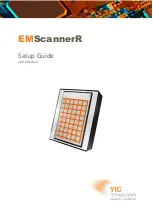
PTE-300-V
Sheet 38
3. When pressing this key again the unit will return to the independent mode and none of
the LEDs will be lit.
c)
MASTER/SLAVE of references
: As the name implies the unit will act as a MASTER or
SLAVE of reference.
When a unit is a MASTER the selected reference in the MASTER unit (Freq., EXT, LINE,
BUS) acts as the reference to all the units connected to the BUS-PTE, if the other units are in
the SLAVE mode.
When a unit is in the SLAVE REFERENCE mode, the reference will come from the unit that is
in the MASTER REFERENCE mode. The reference source, in the SLAVES units, is
automatically selected to the BUS.
The selection of these modes is as follows:
1. Press the key
MASTER/SLAVE
for more than 2 seconds, the LED indicator on the right
marked (M) will light up for 1 second, after the LED indicator on the left marked (S) will
light up for 1 second, and then both LEDs will be off.
2. If the key remains pressed, the selection cycle starts again. To select one of the three
modes, just release the key when the desired is selected.
The sequence allows the following modes:
•
(M) LED indicator lit: The unit is the MASTER OF REFERENCES.
•
(S) LED indicator lit: The unit is in SLAVE OF REFERENCE mode.
•
NO LEDs are lit: The unit is in INDEPENDENT Mode
.
4.5.
COMMUNICATION IN BUS-PTE
4.5.1. EVENTS IN BUS-PTE
The PTE range equipment has been designed in such a way that the test equipments can be
interconnected via the BUS-PTE connector, thus forming a stronger system when testing. The
equipment not only can receive commands by software, but can also send information about its own
status through determined signals, called EVENTS. Activation and deactivation of the
Signal Monitor
,
Output On
or
Off
, a
Step to 2
nd
Value
in amplitude and/or Phase, etc. are some examples of these
mentioned EVENTS:
a) Positive events:
•
Monitor active in a PTE equipment.
•
Output active in a PTE equipment.
•
An output value step to a second level, higher in value that the first one.
•
Phase angle step to a second level, higher in value that the first one.








































